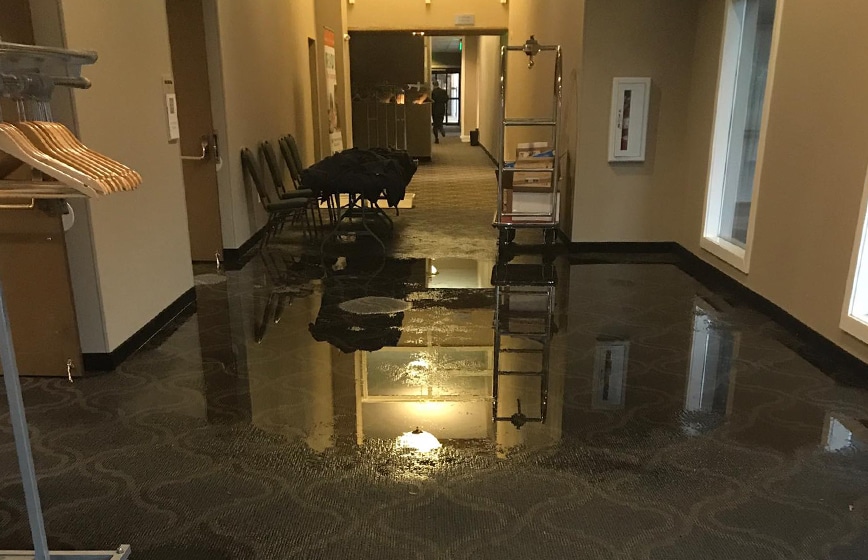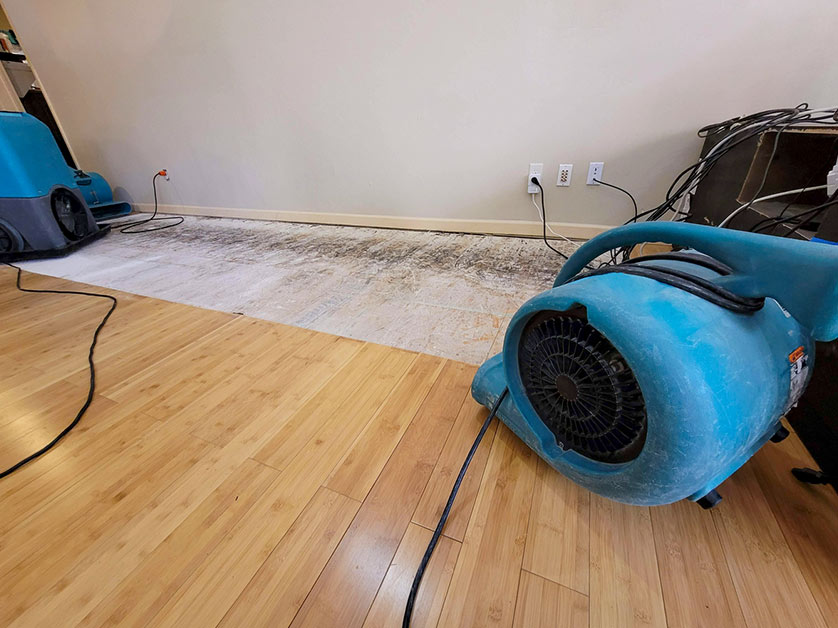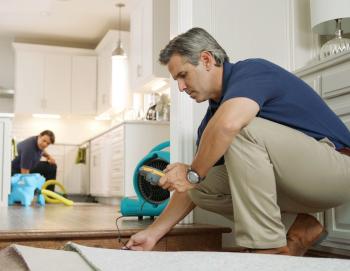How it works when you schedule Flood Cleanup Services
Wiki Article
Water Damage Restoration 101: Comprehending the Process and Cost
Water damage can strike all of a sudden, leaving home owners in a state of confusion. Recognizing the reconstruction process is necessary for effective recuperation. From assessing the damage to choosing the appropriate provider, each step influences the general end result and cost. Variables such as the type of water damage and necessity likewise play a substantial role. What are the details strategies utilized in restoration, and how can one plan for potential expenses?Kinds Of Water Damage

Preliminary Analysis and Inspection

Water Removal Techniques
Complying with the first evaluation, efficient water extraction strategies are used to alleviate damage and prevent additional issues. These techniques include using customized tools such as completely submersible pumps and industrial-grade vacuum cleaners - Water Damage Restoration. The choice of technique relies on the volume of water present and the type of products influenced. For standing water, submersible pumps are commonly utilized for fast removal, while vacuum cleaners are suitable for extracting water from carpetings and furniture. Additionally, progressed methods like water removal floor coverings might be utilized for hard-to-reach locations - Water Damage Restoration. The goal is to eliminate as much water as feasible, lessening the possibility for mold development and structural damage. Trigger and reliable water removal is necessary in the overall water damage remediation processDrying Out and Dehumidification Process
Once the water removal is complete, the drying and dehumidification procedure comes to be crucial to recovering the damaged location. This stage generally employs industrial-grade dehumidifiers and air moving companies to properly minimize dampness levels. The dehumidifiers pull in moist air, removing excess moisture, while air movers distribute air to accelerate evaporation. Tracking devices is frequently utilized to track moisture and temperature level levels, making sure excellent drying out problems. The duration of this process can differ depending on the level of the water damage and environmental factors. It is important to extensively dry all impacted products, including walls, flooring, and home furnishings, to avoid mold development and architectural damage. Correct implementation of this action is essential for a successful restoration result.Cleaning Up and Sanitizing Affected Areas
Once the drying out procedure is total, a detailed preliminary assessment and evaluation of influenced areas is crucial to determine contamination levels. Effective cleaning techniques and suitable items should then be employed to eliminate debris and spots. Sanitization and disinfection techniques are important to assure that harmful pathogens are gotten rid of, bring back the area to a risk-free problem.First Evaluation and Examination
Prior to beginning any reconstruction initiatives, an extensive initial evaluation and evaluation of the influenced locations are crucial for effective cleansing and disinfecting. This procedure entails identifying the extent of water damage, figuring out the source of the water invasion, and reviewing the products influenced. Examiners usually seek indications of mold and mildew development, structural integrity problems, and damaged personal belongings. The assessment also consists of checking dampness degrees using customized equipment to ensure no surprise water pockets remain, as these can lead to additional issues. Recording the findings is important for intending the next steps in the restoration process. An in-depth first assessment allows reconstruction professionals to create a targeted method for effective cleansing and sanitizing, inevitably decreasing damage and health and wellness risks.Cleaning Up Methods and Products
Reliable cleaning and sanitizing of water-damaged locations require a selection of items and methods tailored to the specific products influenced. For permeable surface areas like drywall and carpeting, extraction techniques are necessary to remove excess moisture, followed by deep cleansing with specialized detergents. Non-porous materials such as ceramic tile or steel can be cleaned up making use of commercial-grade cleaners that properly get rid of contaminants. Heavy steam cleansing is another reliable method, particularly for rugs and upholstery, as it utilizes heats to remove microorganisms and mold (Flood Cleanup Services). Furthermore, eco-friendly products are significantly preferred for their security and efficiency - Water Extraction And Drying. Eventually, selecting the proper cleaning approaches and products not only ensures immediate sanitation however likewise help in protecting against read more more damage and health and wellness threats related to water invasionSanitization and Disinfection Techniques
When addressing water damage, appropriate sanitization and sanitation methods are vital to ensure the safety and security and health and wellness of the afflicted atmosphere. After first cleansing, surface areas need to be treated with proper anti-bacterials to eliminate microorganisms, mold and mildew, and germs that grow in damp problems. Typical techniques include using EPA-approved chemical anti-bacterials, which can be used through splashing or wiping methods. In addition, ultraviolet (UV) light systems can properly disinfect areas by neutralizing bacteria without severe chemicals. The option of approach frequently depends on the sort of materials affected and the extent of contamination. Ultimately, complete sanitization not only restores a safe living space however additionally helps avoid future health and wellness dangers associated with lingering moisture and mold development.
Repairs and Restoration Options
Assessing the damage triggered by water direct exposure is vital for determining the ideal fixings and remediation options. Homeowners may deal with various concerns, including damaged drywall, distorted flooring, and compromised structural components. Depending upon the level of the damage, repairs may include replacing areas of drywall, setting up brand-new floor covering, or strengthening structural beams. In situations of severe damage, total substitute of afflicted products could be essential. Furthermore, professional restorers usually suggest utilizing dampness meters to analyze hidden wetness degrees before choosing the very best training course of activity. It is essential to act quickly to stop mold and mildew growth and additional degeneration. Choosing the ideal options not only restores the residential property however also guarantees lasting safety and capability.Factors Affecting Restoration Prices

The extent of water damage directly affects the remediation sets you back house owners can anticipate to sustain. Factors such as the source of the water, the duration of exposure, and the affected materials significantly affect rates. For instance, tidy water damage from a broken pipeline is generally less pricey to restore compared to damage brought on by sewer. In addition, the degree of contamination determines the demand for specialized cleansing and disposal services, further increasing expenses. Geographic place also contributes, as local labor rates and availability of reconstruction solutions can differ. The urgency of the action impacts costs; quicker treatments usually lead to decrease general costs by stopping further damage. Comprehending these elements is important for property owners when estimating reconstruction expenses.
The 3 key kinds of water damage are classified based on contamination degrees: tidy water, gray water, and black water. An extensive preliminary assessment and evaluation are crucial steps in the water damage repair procedure. For standing water, completely submersible pumps are normally utilized for quick removal, while vacuums are suitable for drawing out water from carpets and upholstery. The extent of water damage directly influences the remediation sets you back home owners can expect to sustain. Tidy water damage from a damaged pipe is generally less expensive to recover contrasted to damage created by sewage.
Report this wiki page